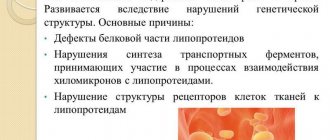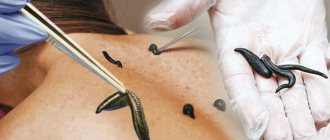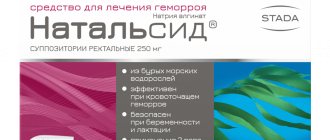There is no doubt about the relevance of the problem of choosing the most effective program of thrombolytic therapy (TLT), since it is thrombolytic drugs that form the basis of drug therapy for acute myocardial infarction (MI) in the first hours after the onset of an anginal attack.
Currently, myocardial infarction is the leading cause of death for patients in economically developed countries. Only in 1990, according to WHO, out of 10,912 patients, 2,695 (25%) died from coronary heart disease (CHD), and 1,001 people died from myocardial infarction, which was 9.2% [1].
According to pooled data from 9 large-scale randomized trials that included patients with suspected MI, TLT started in the first hour of the disease reduced 35-day mortality by an average of 27%, and therapy started after 7-12 hours - only by 13%. When TLT was initiated 13–24 hours after the onset of MI, it had little effect on mortality (FTT Collaborative Group 1994). According to calculations by Weaver W. (1995), TLT, started 1 hour after the onset of an anginal attack, stops the development of MI in approximately 40% of cases, i.e., the formation of irreversible changes in the structure and functions of the left ventricle [2]. However, the majority of patients with MI do not receive TLT for various reasons. Even in the United States, the rate of thrombolysis is only 25–35% [3].
According to modern concepts, the root cause of ischemic damage to the heart muscle during MI is a more or less rapid decrease in oxygen delivery to the myocardium due to complete or partial occlusion of a large coronary artery. In most cases, occlusion of the so-called infarct-related coronary artery is caused by the formation of a parietal thrombus at the site of an atherosclerotic plaque, in the fibrous capsule of which cracks and ruptures have arisen. Dissolution of intravascular thrombi occurs under the influence of plasmin. This trypsin-like enzyme catalyzes the lysis of fibrin to form soluble products, which leads to restoration of blood flow. Plasmin, the main link of the fibrinolytic system, is formed as a result of activation of its precursor, plasminogen, under the influence of activators.
Similar to the coagulation system, there are two pathways for plasminogen activation - internal and external. The leading internal mechanism is triggered by the same factors that initiate blood coagulation, namely factor XIIa, which, interacting with prekallikrein and high molecular weight plasma kininogen, activates plasminogen [4]. This fibrinolysis pathway is the basic one, ensuring activation of the plasmin system not after blood coagulation, but simultaneously with it. It works in a “closed cycle”, since the first portions of kallikrein and plasmin that are formed undergo proteolysis by factor XII, splitting off fragments, under the influence of which the transformation of prekallikrein into kallikrein increases.
It is noteworthy that if in blood coagulation the components of the kallikrein-kinin system perform an auxiliary function, then in the humoral mechanism of fibrinolysis this is one of the leading mechanisms. Activation along the external pathway is carried out due to tissue plasminogen activator (tPA), which is synthesized in the endothelial cells lining the blood vessels. The secretion of tPA from endothelial cells is constant and increases under the influence of various stimuli: thrombin, a number of hormones and drugs (adrenaline, vasopressin and its analogues, nicotinic acid), stress, shock, tissue hypoxia, surgical trauma. Plasminogen and tPA have a pronounced affinity for fibrin. When fibrin appears, plasminogen and its activator bind to it to form a ternary complex (fibrin-plasminogen-tPA), all components of which are located in such a way that effective activation of plasminogen occurs. As a result, plasmin is formed directly on the surface of fibrin; the latter is further subjected to proteolytic degradation.
The second natural plasminogen activator is a urokinase-type activator, synthesized by the renal epithelium, which, unlike the tissue activator, has no affinity for fibrin. Activation of plasminogen occurs on specific receptors on the surface of endothelial cells and a number of blood cells directly involved in the formation of a blood clot. Normally, the level of urokinase in plasma is several times higher than the level of tPA; There are reports of the important role of urokinase activator in the healing of damaged endothelium [5].
Plasmin, formed under the influence of plasminogen activators, is an active short-lived enzyme (half-life in the bloodstream - 0.1 s); it leads to proteolysis of not only fibrin, but also fibrinogen, coagulation factors V, VIII and other plasma proteins.
The action of plasmin is controlled by several inhibitors, the main of which is fast-acting a2-antiplasmin, synthesized in the liver. It forms an inactive complex with free plasmin that enters the circulation. Plasmin formed on fibrin or on the surface of cells is protected from the action of a2-antiplasmin. Other fibrinolysis inhibitors that have a much weaker effect include a2-macroglobulin and a C1-esterase inhibitor. The latter inhibits factor XIIa, kallikrein and partly plasmin, i.e. it specifically blocks internal fibrinolysis.
The second mechanism for limiting fibrinolysis is the inhibition of plasminogen activators. The most physiologically significant is the endothelial-type plasminogen activator inhibitor (PAI-1). It inactivates both tissue and urokinase types of activators and is synthesized in endothelial cells, platelets and monocytes. Its secretion is enhanced under the influence of tissue plasmingen activator, thrombin, cytokines - mediators of inflammation, bacterial endotoxins. In addition to the enzymatic fibrinolytic system, the body has a system of non-enzymatic fibrinolysis, which is carried out by complex compounds of heparin with hormones and components of the coagulation system (the heparin-antithrombin III complex - adrenaline) is especially active. Non-enzymatic fibrinolysis is especially important for maintaining a fluid state of the blood and preventing thrombus formation in stressful situations, since it transforms adrenaline from a risk factor into a component of the anticoagulant system. Non-enzymatic fibrinolysis is not inhibited by antiplasmins, and therefore it functions under physiological conditions, balancing subclinical changes in the hemostatic system.
Pharmacological dissolution of blood clots can be performed using intravenous or intra-arterial infusion of plasminogen activators [6], of which there are currently 5 generations. They differ significantly from each other in composition and origin, but their activating effect is due to proteolysis of the same peptide bond of plasminogen. While the catalytic principle of action is the same for all plasminogen activators, their different types differ significantly in sorption capacity, which determines the recognition and binding of the activator to the zone of thrombotic lesion.
The 1st and 2nd generations include natural plasminogen activators. Urokinase and streptokinase - representatives of the first generation - do not have a noticeable affinity for fibrin and lead to intense systemic activation of plasminogen, in contrast to tPA and prourokinase (second generation), which have a pronounced affinity for fibrin and activate plasminogen only on the surface of the clot.
With the development of recombinant DNA technology and the improvement of methods of chemical synthesis of biomacromolecules, a large number of new derivatives were obtained that differ from the natural forms of plasminogen activators and are classified as the 3rd generation. Modified urokinase-fibrinogen has a more pronounced thrombolytic effect than urokinase, is characterized by a prolonged residence in the bloodstream and a weak effect on the systemic activation of fibrinolysis. Reteplase, lanoteplase and E6010 - mutant forms of tPA - have a prolonged effect in the bloodstream and an increased thrombolytic effect with less depletion of hemostatic blood proteins. Saruplase is a mutant form of prourokinase with increased catalytic activity.
Chimeric forms of plasminogen activators were obtained by genetic engineering. The principle of constructing such derivatives is to combine the catalytic part of plasminogen activators, which ensures the formation of plasmin, with fragments of other protein molecules that recognize the thrombosis zone, facilitating the binding and accumulation of such an agent in the thrombosis zone. The first type of chimeric molecules consists of fragments of monoclonal antibodies against fibrin and prourokinase of low molecular weight. Activation of the urokinase activator in this biomolecule is carried out by thrombin, which makes this chimeric form specific to fresh blood clots.
Type 2 derivatives of chimeric activators are fragments of monoclonal antibodies against fibrin associated with tissue plasminogen activator. In a monkey model of thrombosis, this chimeric protein caused more effective thrombolysis compared to tissue plasminogen activator and prourokinase.
Type 3 chimeric derivatives consist of parts of tPA and the catalytic part of urokinase. This form provides effective thrombolysis in lower doses than natural activators.
In chimeric derivatives of type 4, P-selectin and annexin V are used as the recognition part. P-selectin is a protein synthesized by the endothelium and platelets that ensures platelet adhesion, accelerating thrombus formation. Annexin V targets plasminogen activator to thrombus through its ability to bind tightly to the membranes of activated platelets. Fragments of tPA and prourokinase are used as the catalytic part. These chimeras are practically not inhibited by PAI-1.
The appearance of a large number of chimeric forms raises the question of the reality of their use. A limiting factor in this direction may be the high cost of their production and the need for a thorough immunological assessment of chimeras as fundamentally new biological molecules.
4th generation plasminogen activators were obtained using a combination of biological and chemical synthesis techniques. Thrombolytic compositions, classified as the 5th generation, involve the combined administration of different plasminogen activators with a complementary mechanism of action and a pharmacokinetically different profile, which reliably contributes to the achievement of effective thrombolysis in vitro. For example, the use of tPA as a trigger for thrombolysis and a covalent urokinase-fibrinogen conjugate as a means of supporting the thrombolytic effect, which it has due to its prolonged residence in the bloodstream, provides a rapid and significant thrombolytic effect in a model of venous thrombosis in dogs with moderate depletion of hemostatic blood proteins [7 ]. The named composition consists of low doses of these components, which are 4–20 times less than those used for monotherapy. Such a reduction in doses can significantly reduce the cost of TLT, which limits its widespread use.
As is known, tPA is synthesized by endothelial cells of blood vessels. It is also found in various tissues, including the uterus, ovaries, lungs, prostate, muscle tissue, spleen, and liver. It was first obtained in an isolated and purified state in the early 1980s. Today, the most widely used tPA is synthesized by the DNA recombinant method (rtPA). This drug is 99% purified and consists of single- and double-chain protein molecules, and in the presence of two chains, they are interconnected by disulfide bonds, and single-chain compounds are formed from the latter by partial enzymatic cleavage. In the literature, both domestic and foreign, the drug, obtained by the DNA recombinant method and representing a single-chain tissue plasminogen activator, is most often referred to as “alteplase” and t-PA. Currently, alteplase is available in Russia under the proprietary name Actilyse.
All thrombolytic drugs, as protein compounds with a short half-life, are administered intravenously or, less commonly, intracoronary. When administered intravenously, alteplase is relatively inactive in the blood, quickly distributed with a T1/2 in the a-phase of 4–5 minutes, i.e., after 20 minutes less than 10% of the initial amount of the drug remains in the plasma. T1/2 in the b-phase of the amount remaining in the depot is 40 minutes. Alteplase is activated upon binding to fibrin and induces the conversion of plasminogen to plasmin, which breaks down the fibrin clot. The effect of the drug is specific to a blood clot, since under normal conditions (i.e., without the formation of a blood clot), circulating plasmin is activated slowly and is almost completely neutralized by antiplasmins circulating in the blood.
Alteplase is metabolized mainly in the liver (plasma Cl - 380–570 ml/min) by hydrolysis, and then 80% of the drug is excreted in the urine in the form of metabolites [10, 11]. Accordingly, drug clearance worsens with impaired liver function, but does not change with renal failure.
It has been proven that the main factors determining the final size of myocardial infarction are the time to myocardial reperfusion and, to a lesser extent, the development of collateral blood flow.
Experimental studies have found that in the period 40–60 minutes after ligation of a large coronary artery in dogs, most of the cardiomyocytes in the subendocardial layer of the myocardium, which is located in the basin of the occluded artery, are damaged. With longer ischemia, irreversible changes affect the entire thickness of the wall of the left ventricle, reaching its subepicardial layer within 3–6 hours. In the first 4 hours after occlusion of the coronary artery in the zone of maximum ischemia, about 60% of the total myocardial mass is necrotic, and necrosis of the remaining 40% occurs over the next 20 hours (Reimer K. et al., 1977–79) This determines the treatment tactics, the purpose of which – achieving early and sustained reperfusion of the occluded vessel, resulting in preservation of the myocardium, reduction in the spread of myocardial infarction and reduction in electrical instability of the myocardium. Restoring the patency of a damaged vessel helps to improve the residual function of the left ventricle, reduce complications, reduce the risk of MI-related morbidity and mortality, and also extend the life expectancy of the patient after an MI.
Reperfusion can limit the spread of MI in several ways. It reduces the amount to which the MI zone and peri-infarction zone expand. Even if the size of the infarction does not decrease, preservation of the epicardial layer may result in less distension of the affected area. The healing pathway of the infarcted myocardium may be as important as the initial reduction in MI size. Late reperfusion of the ischemic area of the myocardium also causes a decrease in necrosis of muscle bundles and preservation of myocardial contractile function. Finally, reperfusion may reduce the risk of electrical instability. Early death in MI occurs suddenly as a result of ventricular fibrillation. Patients who have undergone reperfusion, according to electrophysiological studies, suffer less from ventricular arrhythmias and are less likely to have late repolarization disturbances on the ECG [12].
Thus, there is no doubt that the main criterion for the effectiveness of TLT is the assessment of the state of perfusion in the affected coronary artery, which is carried out using angiography, usually performed after 60 or 90 minutes or for a period of up to 72 hours after the start of the infusion of one or another thrombolytic agent.
Currently, the assessment of coronary artery patency is carried out according to the criteria proposed in 1985 by the TIMI (Thrombolysis in Myocardial Infarction) research group and is determined by grade (from 0 to 3). According to this classification, a degree of coronary artery patency of 0–1 indicates the absence of coronary artery reperfusion, i.e., the ineffectiveness of the thrombolytic agent. When grade 2–3 is reached, we can talk about restoration of patency of the affected artery, and when grade 3, we can talk about complete restoration of blood flow in the affected artery under the influence of a thrombolytic agent.
In the controlled study TIMI 1 (1988), a small group of patients (232 people) compared the effectiveness of intravenous administration of alteplase at a dose of 80 mg for 3 hours and streptokinase within a period of up to 7 hours from the onset of MI. As a result, according to angiography, after 90 minutes from the start of treatment, it was possible to achieve patency of the affected artery (reperfusion) in 62% of patients receiving alteplase, compared with 31% in the streptokinase group (p
A number of other studies have found similar results. When alteplase was administered (n = 85), the patency of the infarct-related artery was angiographically confirmed at 90 minutes from the start of drug administration in 71% of patients with acute MI, and at 120 minutes – in 85% [15].
Taking into account the results obtained, it was suggested that it would be advisable to further study the effectiveness of alteplase, and a new regimen for intravenous administration of this drug was proposed.
In the TIMI-2 study (1989), 3262 patients were given alteplase initially at a dose of 150 mg over 6 hours, and then at a dose of 100 mg over the next 6 hours. It was possible to restore blood flow in the infarct-related coronary artery in 84.7% of patients; however, in this study, there was a high incidence of life-threatening bleeding (1.6%) due to the use of large doses of the drug at the initial stage of treatment (150 mg) compared with 80 mg over 3 hours in TIMI-1 [13, 24]. .
Neuhaus K. et al. (1989) proposed a regimen of “accelerated” administration of alteplase: 100 mg over 90 minutes, with the first 15 mg administered as a bolus, and then the infusion began (50 mg over 30 minutes, 35 mg over the remaining 60 minutes). The accelerated administration of alteplase was successfully tested in one of the largest studies examining the effectiveness of thrombolytic therapy for myocardial infarction (GUSTO-1).
The purpose of the GISSI-2 (1990) and ISIS-3 (1992) studies was to compare the effectiveness of alteplase and streptokinase (GISSI-2) and alteplase and anistreplase with streptokinase (ISIS-3). When treated with different thrombolytic drugs, almost the same mortality occurred. The incidence of stroke with streptokinase was much lower than with anistreplase and alteplase [16, 17].
In this regard, in 1993, a large-scale study GUSTO-1 was organized, the purpose of which was to compare the effectiveness of the use of alteplase according to a new accelerated administration regimen and streptokinase, including various options for combining these drugs both with each other and with simultaneous i.v. subcutaneous administration of heparin, as well as taking aspirin.
The research results (Table and ) clearly demonstrated a significant increase in the frequency of recanalization of the infarct-related artery with accelerated administration of alteplase in comparison with streptokinase in the most significant time interval - 90 minutes (81.3 and 59%, respectively). It was also noted that by 180 minutes from the start of administration of these drugs, their effectiveness becomes almost identical (76.3 and 72.4%, respectively). However, there was a significant reduction in mortality among patients receiving alteplase (14% overall), with a slight increase in the risk of intracranial hemorrhage in this group (0.7 versus 0.6% with streptokinase) [18–20].
In other controlled studies, intracoronary administration of alteplase had the same effect in patients with MI as intracoronary administration of streptokinase. In patients with MI, in cases of early (within 2.5 hours from the onset of the disease) use of alteplase, left ventricular function improved by 21 days [21]. When alteplase was administered within the first five hours from the onset of the disease, an increase in patient survival by the 30th day of the disease and an increase in left ventricular ejection fraction on days 10–22 after the onset of MI were noted [22]. At the same time, complications such as cardiogenic shock, ventricular fibrillation and pericarditis occurred less frequently. The drug, compared to streptokinase, relatively rarely caused hypotension. Reocclusion of the affected vessel in patients with MI after intravenous administration of alteplase was observed in less than 10% of cases (Verstraete M. et al., 1987) [23, 24].
From 1994 to 1996, 71,253 hospitalized patients with acute myocardial infarction were treated with alteplase in 1,474 US hospitals. Of these, therapy was carried out within 2 hours from the onset of the disease in 39% of patients, from 2.1 to 4 hours - in 36%, from 4.1 to 6 hours - in 12%, and later - in 13%. In-hospital mortality and the incidence of persistent ventricular arrhythmias increased progressively with delay in the initiation of alteplase treatment; the lowest risk of death was observed with the earliest use of the drug (up to 2 hours from the onset of the disease). There was no association between the timing of alteplase use and the risk of developing complications during hospitalization such as recurrent myocardial infarction, myocardial ischemia, cardiogenic shock, major bleeding episodes, stroke and intracranial hemorrhage [24]. Data on an increase in in-hospital mortality in patients with acute myocardial infarction with their later admission to the hospital and a delay in the initiation of alteplase confirmed the results obtained earlier in the GUSTO-1 study.
According to angiographic data, in 886 patients with acute myocardial infarction (TIMI 10B study, 1999), intravenous administration of large (from 0.52 to 1.24 mg/kg) and medium (from 0.4 to 0.51 mg/kg) doses alteplase in an accelerated dosing regimen had a better effect on disease outcomes than treatment with low doses of the drug (from 0.2 to 0.39 mg/kg) [26–28].
The modern scheme for the use of alteplase (Actilyse) in acute MI is as follows:
- The 90-minute (accelerated) administration regimen is indicated for patients with a disease duration not exceeding 6 hours, and sequentially includes: 15 mg as an IV bolus, 50 mg as an IV infusion in the first 30 minutes, 35 mg as an IV /infusion over the next 60 minutes (total dose 100 mg);
- The 3-hour administration regimen is indicated for patients with a 6-12 hour illness and sequentially includes: 10 mg as an IV bolus, 50 mg as an IV infusion in the first hour, then 10 mg every 30 minutes until the total doses 100 mg.
The maximum permissible dose of Actilyse is 100 mg.
Adjuvant therapy with aspirin and heparin for acute MI is recommended to be prescribed as early as possible before the administration of Actilyse.
Contraindications to the use of Actilyse, as well as other thrombolytics, are hemorrhagic syndromes, ongoing or recent massive internal bleeding, and cerebral hemorrhage. The drug should also not be used within 2 months after surgery on the brain or spinal cord, in severe uncontrolled arterial hypertension, bacterial endocarditis, acute pancreatitis.
Due to the fibrinolytic properties of Actilyse, bleeding may occur, usually limited to the injection site. In such cases there is no need to interrupt treatment. However, if there is a threat of life-threatening bleeding, TLT should be interrupted. Due to the short half-life of Actilyse and the minimal effect of the drug on the blood coagulation system, replenishment of coagulation factors is usually not required [29, 30].
Pharmacoeconomic aspects of the use of alteplase. It is no secret that the main reason for the much wider use of streptokinase in our country rather than alteplase is the higher cost of the latter. Indeed, when calculated, the direct economic costs of using a TLT regimen that includes alteplase will obviously be higher than when using a regimen with streptokinase. However, a full analysis of the effectiveness of drug therapy using pharmacoeconomic methods, including taking into account indirect costs, showed clear economic advantages of using alteplase over streptokinase.
Pharmacoeconomic analysis conducted based on the results of the GUSTO-1 study showed the following. Over a one-year follow-up period, costs per patient in the alteplase group averaged $2,845 higher than those treated with streptokinase. However, the first-year mortality rate in the group of patients treated with alteplase was 1.1% (11 per 1000) lower than in the group of patients treated with streptokinase. Using these data in further calculations showed that the use of alteplase saved $32,678 for each year of patient life saved [31].
Similar data reflecting the economic advantages of using alteplase as a thrombolytic agent were obtained in a number of other foreign studies conducted using various methods of pharmacoeconomic analysis [32–34].
Unfortunately, a feature of all these studies is the impossibility of directly applying foreign data to the conditions of domestic healthcare, since the structure of direct and indirect costs in Russia differs significantly from those in other countries [35]. In this regard, there is no doubt about the need to further develop methodological foundations for standardizing the results of pharmacoeconomic studies in Russian conditions. In light of the above, it seems very relevant to conduct a pharmacoeconomic study of alteplase in Russian conditions, the results of which may become an additional and very compelling argument in favor of a wider use of this drug than today.
In what dose should Alteplase be used for acute ischemic stroke?
It has been suggested that thrombolytic therapy using a lower than standard dose of intravenous alteplase may be effective in reducing the risk of intracerebral bleeding.
Materials and methods
The ENCHANTED trial randomized 3310 patients (mean age 67 years, 63% Asian) with acute ischemic stroke. They were divided into 2 groups: in the first, alteplase was used at a low dose of 0.6 mg/kg, in the second, at a standard dose of 0.9 mg/kg during the first 4.5 hours after the onset of symptoms.
The primary objective of the study was to assess whether low-dose alteplase is noninferior to standard dose in terms of the incidence of death and disability at 90 days (Rankine scale score from 2 to 6 points (0 = no symptoms, 6 = death).
Secondary objectives of the study were to determine how much less intracerebral bleeding occurs with the use of low-dose alteplase, and to evaluate whether the low-dose drug met the noninferiority criterion on the modified Rankin scale.
results
The primary endpoint of the study was achieved by 855 of 1607 (53.2%) patients in the low-dose alteplase group and 817 of 1599 (51.1%) in the standard-dose group (OR, 1.09; 95% CI, 0.95-1.25; the upper limit exceeded the noninferiority threshold in 1.14).
At the same time, a low dose of alteplase met the noninferiority criterion when analyzing the sum of points on the modified Rankin scale (OR, 1.00; 95% CI, 0.89-1.13; P = 0.04 for the noninferiority threshold).
Serious intracerebral bleeding occurred in 1% of patients receiving low-dose thrombolytics and in 2.1% of patients receiving standard-dose alteplase (P=0.01); fatal events within 7 days occurred in 0.5% and 1.5%, respectively (P=0.01). Mortality at study day 90 was not significantly different between the two groups (8.5% and 10.3%, respectively; P=0.07).
Conclusion
According to the study results, the low dose of alteplase did not reach the threshold of non inferiority in terms of mortality and disability at 90 days.
Significantly fewer symptomatic intracerebral hemorrhages were observed with the low dose of alteplase.
Source:
Craig S. Anderson, Thompson Robinson, Richard I. Lindley, Hisatomi Arima, Pablo M. Lavados, Tsong-Hai Lee, Joseph P. Broderick, et al. Low-Dose versus Standard-Dose Intravenous Alteplase in Acute IschemicStroke. N Engl J Med 2016; 374:2313–2323.








